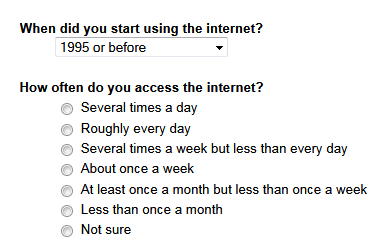I recently popped into a branch of one of the main high street banks and couldn’t resist picking up the in-branch service questionnaire. These things are relatively common these days, with every organisation from high street shops to the police asking you to rate the quality of the service you received. This one, though, has issues than most.
The first issue is the poor design and quality of the survey. It has been roughly torn along one edge, uses too many colours (including red and green together, which is a disaster for many red-green colour-blind readers), and has a large organisational chart taken straight from Microsoft Word in the middle of the page. Any literature you produce and provide to customers reflects your brand and image, so the poor presentation and finish of this survey is bound to reflect poorly.
The first sentence is one of the most obvious examples of a loaded question I’ve seen, one of the cardinal sins of survey and questionnaire design.
The next four questions are similarly problematic. I don’t think it’s clear that they are questions, as the alignment (centre-aligned) is ambiguous, and there are no places to mark an answer, like a simple empty box. The provided answers are also entirely arbitrary: why can you answer ‘excellent/very good’ for queue experience and not for ‘making you feel valued?’ Is the queue experience actually how long you had to queue, or is it the entertainment provided while you queue that respondents are asked to comment on? And, finally for this section, ‘making you feel valued’ is so vague it’s practically meaningless.



 In case you can’t see the screencapture, the question asks, “When did you start using the internet?” Possible responses are:
In case you can’t see the screencapture, the question asks, “When did you start using the internet?” Possible responses are: